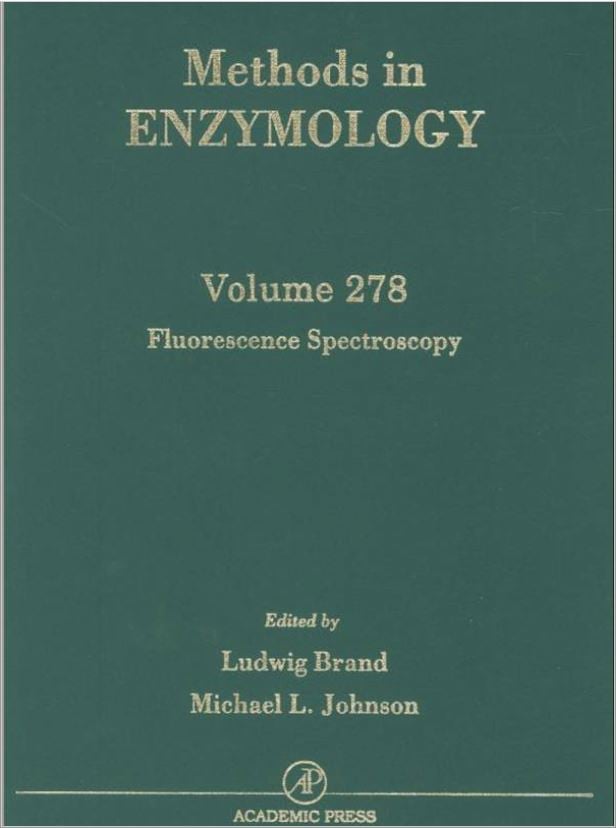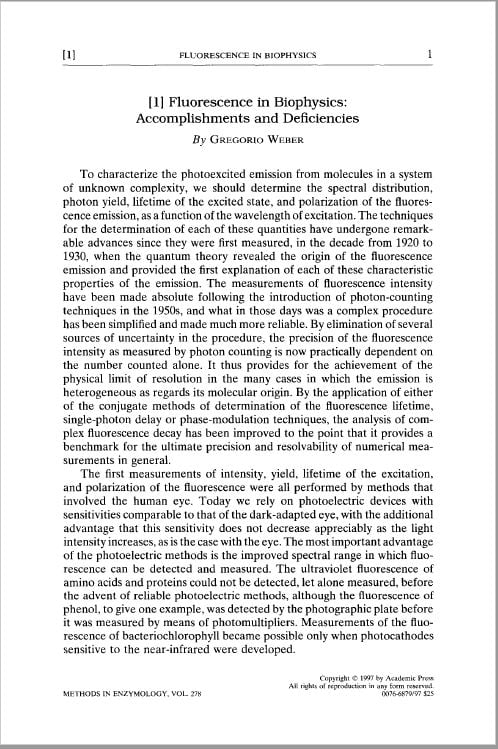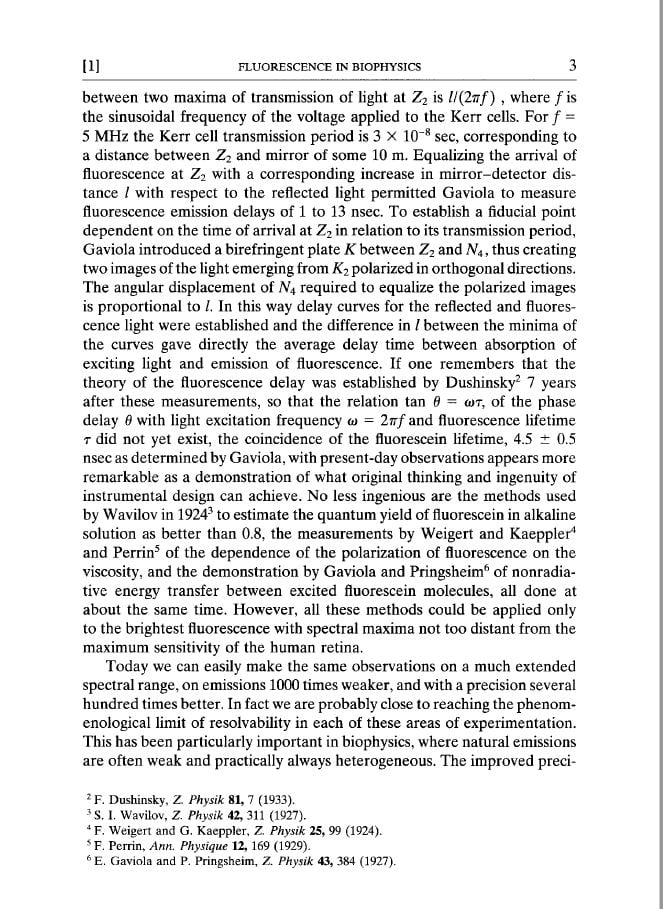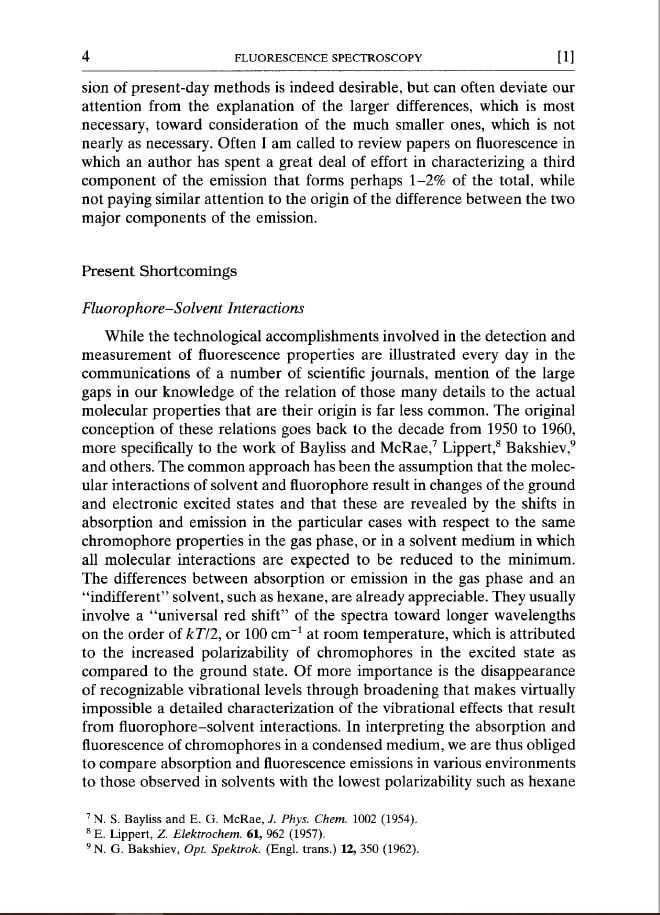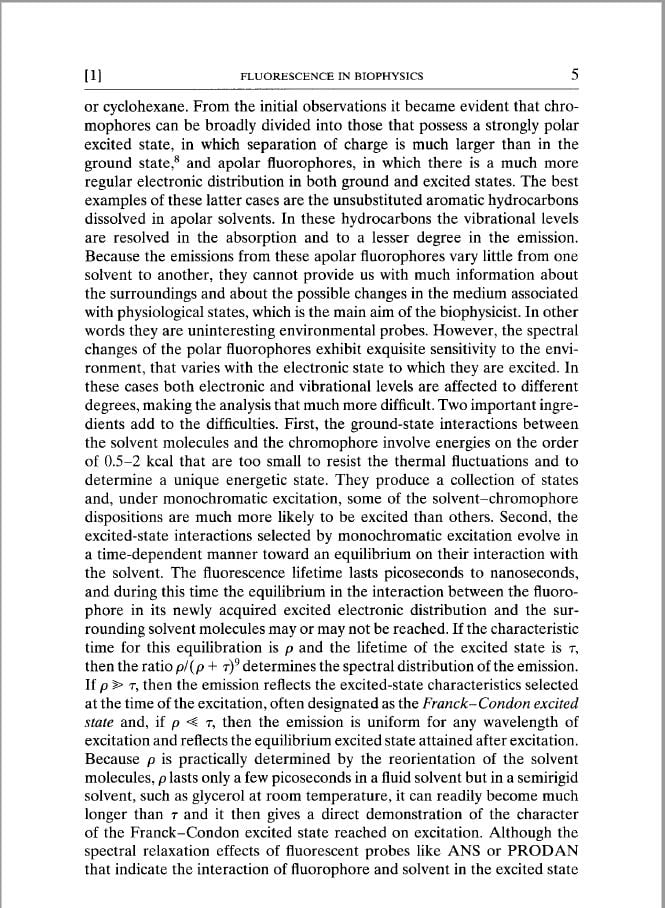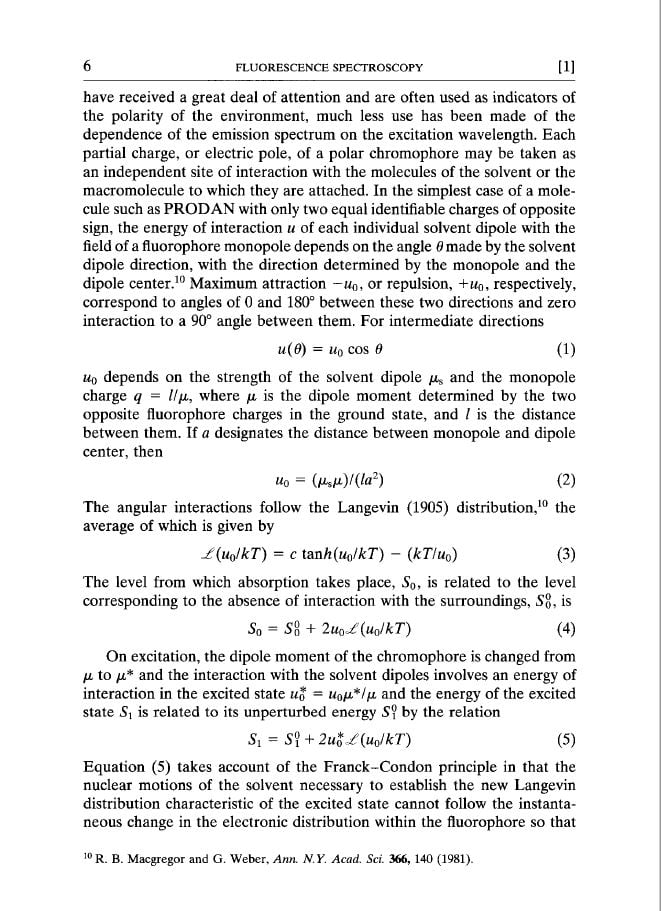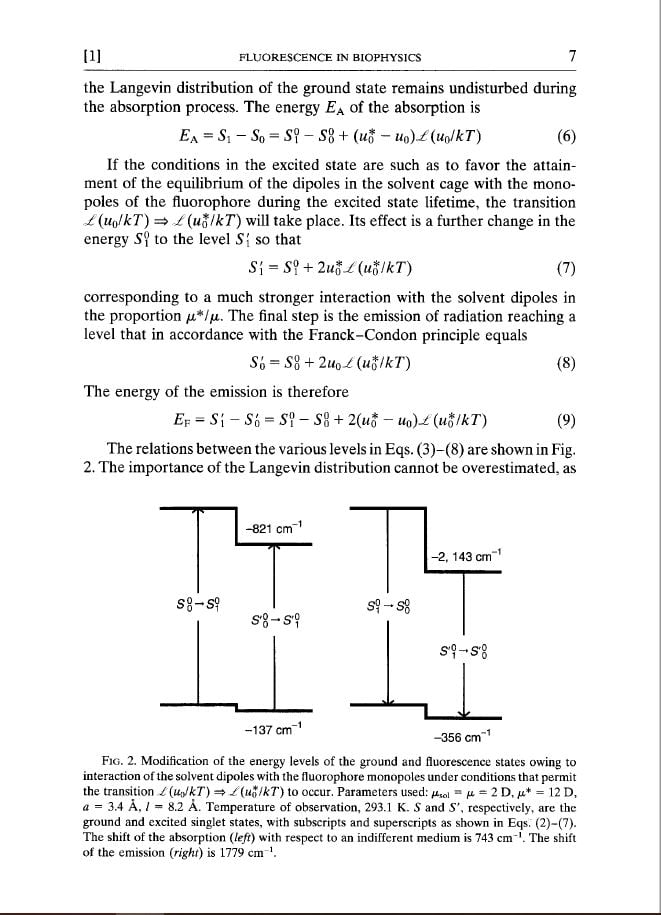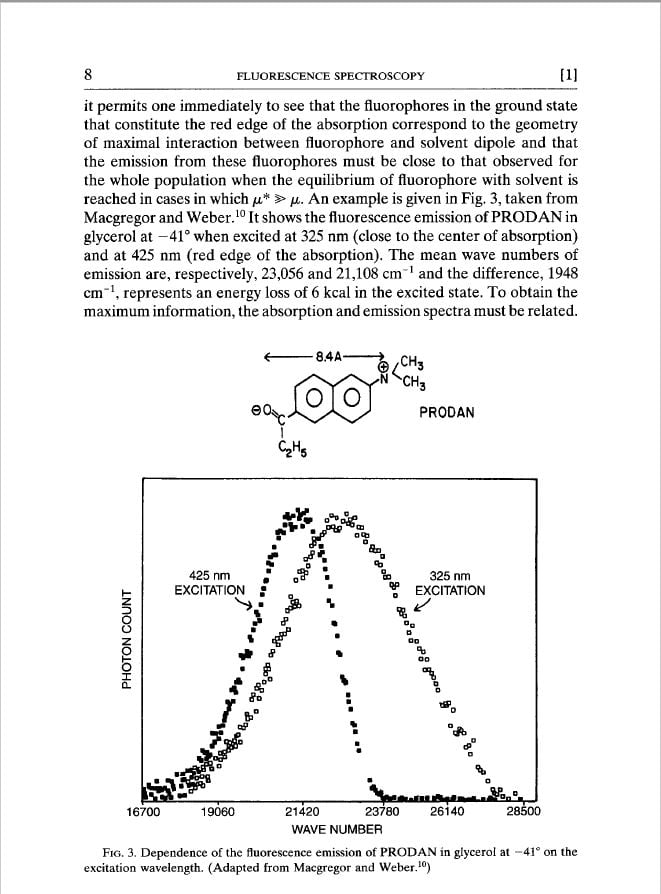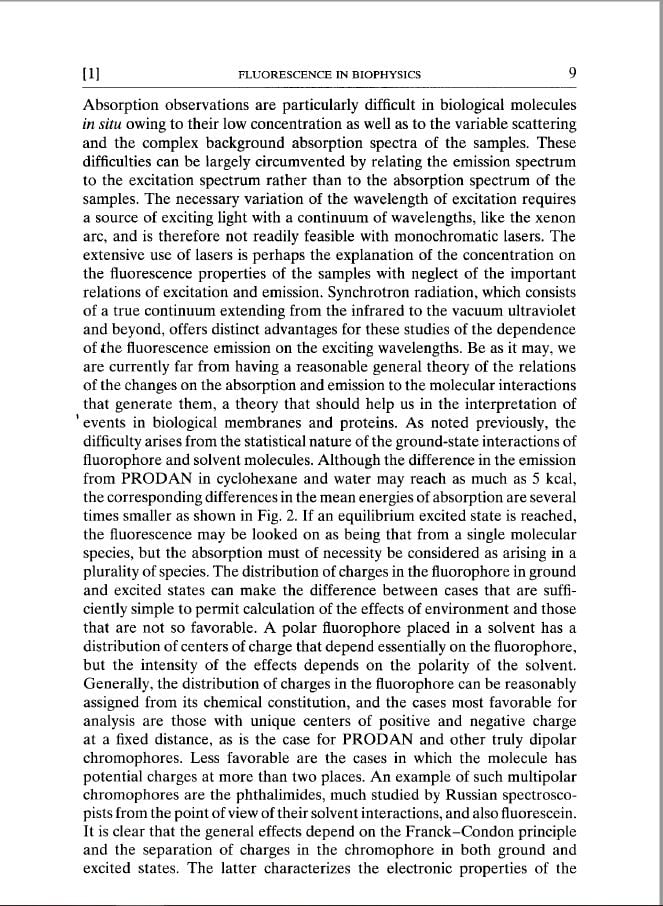Methods in Enzymology. Fluorescence Spectroscopy. Vol. 278
On Sale
$3.53
$3.53
Fluorescence spectroscopy stands out among the optical techniques used
to investigate biomolecules in that the lifetime of the excited states is
sufficiently long for a variety of chemical and physical interactions to take
place prior to emission.
Topics covered in this volume include discussions of the fluorescence
of tryptophan, the origin of the excited states, and their sensitivity to environmental
perturbations. Studies of constrained tryptophan residues have
been helpful in this regard as have been studies of tryptophan in crystals.
The fluorescence of proteins can be utilized to study the equilibria and
kinetics of protein-protein and protein-nucleic acid interactions. Incorporation
of tryptophan derivatives into proteins has led to spectrally enhanced
proteins which have been helpful in these studies. New technology is described
which allows fluorescence lifetimes to be used to study slower
(millisecond to second) kinetic processes. Applications of fluorescence to
studies of nucleic acids and protein-nucleic acid interactions are moving
forward at a rapid pace. New probes have been developed and energy
transfer and emission anisotropy are being used to advantage. Fluorescence
provides excellent ways to measure DNA cleavage.
Several chapters describe applications of fluorescence to studies of bilayer
membranes as well as of cell surfaces. Fluorescence spectroscopy
continues to be of value in studies of complex systems such as chloroplast
ATP synthase and hemoglobin.
From the breadth of these topics it is clear that fluorescence techniques
have wide application for studies of biological problems. This volume
touches on some of these important areas.
Edited by Ludwig Brandt and Michael L. Johnson. Printed in 1997.
eBook features:
Highlight, take notes, and search in the book
Page numbers coincide with the physical edition
Length: 630 pages
to investigate biomolecules in that the lifetime of the excited states is
sufficiently long for a variety of chemical and physical interactions to take
place prior to emission.
Topics covered in this volume include discussions of the fluorescence
of tryptophan, the origin of the excited states, and their sensitivity to environmental
perturbations. Studies of constrained tryptophan residues have
been helpful in this regard as have been studies of tryptophan in crystals.
The fluorescence of proteins can be utilized to study the equilibria and
kinetics of protein-protein and protein-nucleic acid interactions. Incorporation
of tryptophan derivatives into proteins has led to spectrally enhanced
proteins which have been helpful in these studies. New technology is described
which allows fluorescence lifetimes to be used to study slower
(millisecond to second) kinetic processes. Applications of fluorescence to
studies of nucleic acids and protein-nucleic acid interactions are moving
forward at a rapid pace. New probes have been developed and energy
transfer and emission anisotropy are being used to advantage. Fluorescence
provides excellent ways to measure DNA cleavage.
Several chapters describe applications of fluorescence to studies of bilayer
membranes as well as of cell surfaces. Fluorescence spectroscopy
continues to be of value in studies of complex systems such as chloroplast
ATP synthase and hemoglobin.
From the breadth of these topics it is clear that fluorescence techniques
have wide application for studies of biological problems. This volume
touches on some of these important areas.
Edited by Ludwig Brandt and Michael L. Johnson. Printed in 1997.
eBook features:
Highlight, take notes, and search in the book
Page numbers coincide with the physical edition
Length: 630 pages


